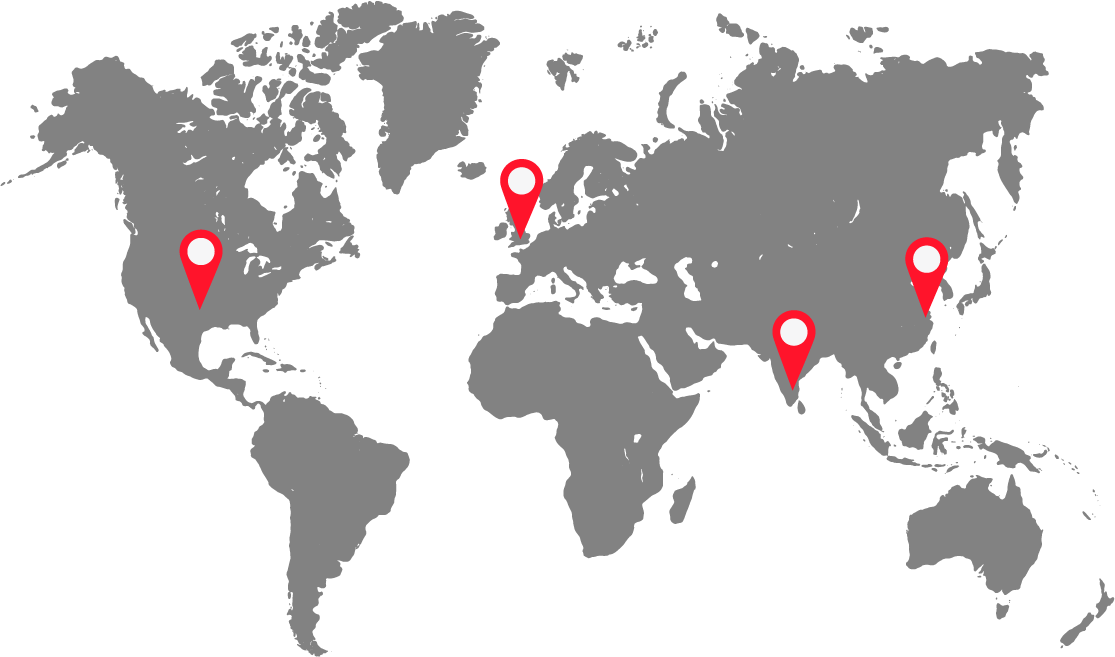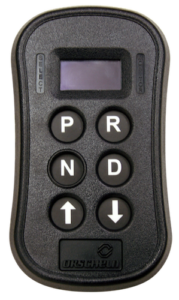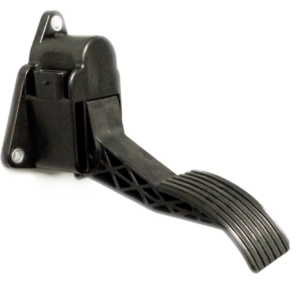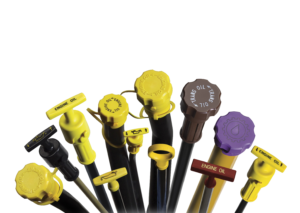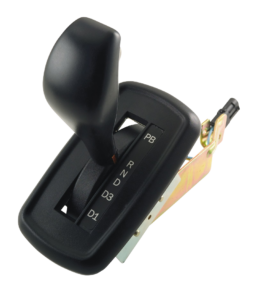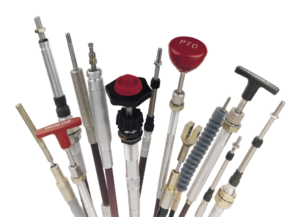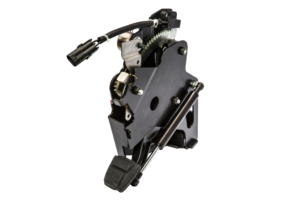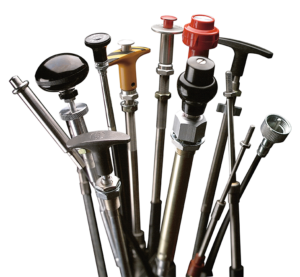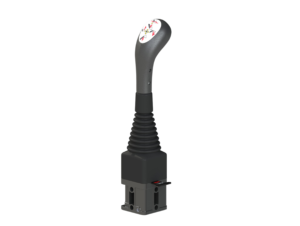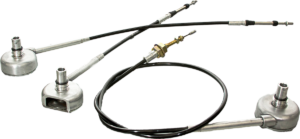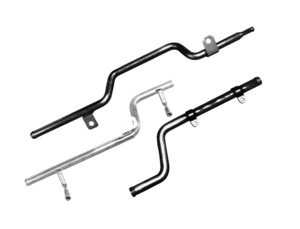Push-Pull, Tension, and Other Types of Control Cables Available at Orscheln
Any industry that utilizes mechanically operated equipment will require well-manufactured components in order to effectively manage operations. Each of these components requires a number of different parts working in unison in order to operate with maximum efficiency. In particular, the lifeblood of those operations lies within the mechanical control cables.
High-quality control cables are invaluable for a wide variety of applications within multiple different industries. Due to that versatility, there are a number of important specifications to consider when purchasing mechanical control cables or ordering them custom-made.
And because they also play a substantial role in the safety of these applications—it’s imperative to partner with a trusted developer that will follow all local, federal, and international safety regulations.
Offering over 70 years of experience serving customers throughout an extensive range of markets, Orscheln Products is precisely the partner you need. Read on to learn more about mechanical control cables and our process for design, manufacturing, and quality assurance!
What Are Mechanical Control Cables?
The function of control cables is to, essentially, transfer a motion. Within a mechanical control cable, you’ll find a set of attached fittings, including eyes, forks, studs, handles, and more.
Depending on the type of motion employed, we often refer to mechanical control cables as push-pull control cables or pull-pull mechanical control cables. When operated, control cables will transfer motion to control the function of a piece of equipment, which engages these push and pull actions.
At Orscheln specifically, the types of cables that we manufacture include, but aren’t limited to:
- Push-pull control cables: use compression and tension to transmit multi-directional precision control of a given mechanical motion. This means that while the cable moves in one direction, tension moves it in the opposite direction. Push-pull cables see use in a variety of industries, including automotive, aerospace, oil & gas, manufacturing, and more.
- Ball bearing control cables: uses a ball bearing slide to transfer the push-pull motion from one point to another—commonly used in the aerospace and defense industries.
○ When transmitting the load through the control assembly, the goal with ball bearing control cables is to maximize load capability while reducing backlash in an accurate, efficient manner. To support this, Orscheln uses rod and sleeve seals to protect against moisture egression.
- Tension (known as “pull only” style) control cables: sees use in applications that require the transmission of forces in tension only. They help to maintain a specified load on the cable and return to its original position after use. Pull-only control cables have a unique design to accommodate applications with high load capability and low deflection (such as a parking brake).
The typical applications of our mechanical control cables at Orscheln include transmission shift cables, throttle controls, or valve control cables. In terms of the equipment used, our team has developed control cables for use in:
- Trucks
- Buses
- Motorhomes
- Delivery Vehicles
- Marine engines
- Agricultural equipment
- Farm machinery
- Motor graders
- Excavators
- Wheel loaders
- Tractors
- Farm machinery
- Bulldozers
- Cranes
- Forklifts
- Generators
- Military vehicles
Our Control Cable Production Process
Orscheln Products prides itself on being an ideal partner when it comes to providing control cables for OEM (original equipment manufacturer) or aftermarket customers. We work with companies across a wide variety of industries—using a highly collaborative process to provide standard and custom-manufactured mechanical control cables.
The process starts by reaching out to our qualified sales team. In the case of our standard product lines, Orscheln develops and manufactures the Felsted™ and ACCO control cable product lines. Paired with our custom design and production capabilities, we supply the most diverse cable offering of any manufacturer worldwide.
When ordering a standard or custom-designed control cable, our team will immediately work with you to develop a complete understanding of your business’ individual requirements. To choose the correct control cable, you’ll need to evaluate a few different factors, which include:
- The cable’s routing
- Connections (as most have threaded ends that can accept a clevis, ball joint, or other hardware)
- Travel
- Length requirements
- And the load that needs to be pushed or pulled
It’s important to note we determine the limitation of a control cable’s length through the friction it endures over time. Typical control cables are usually up to 30 feet long—but can be up to 100 feet long or more if used mostly in a straight routing.
When developing our cables, our materials use a nylon-coated, galvanized core—along with a long lay rope polymer rod and sleeve bearing, and a thick wall polymer jacket extruded on the cable casing. This helps to protect against water, dirt, and abrasion.
Each OEM and aftermarket customer has the option to configure their control cables based on the application’s unique needs. These varying cable constructions allow us to offer improved flexibility, efficiency, and load capabilities based on your specifications. Along with a powerful design and emphasis on ease of use, we can ensure a top-quality product for each customer.
Testing & Quality Assurance
Orscheln control cables maintain high worldwide acclaim within our industry. We place emphasis on producing long-lasting, rugged products that utilize only the highest quality materials. More importantly, we utilize extensive testing to ensure that each product meets and exceeds all local, federal, and international regulations.
Depending on the customer’s requirements, we customize our test protocols to ensure that the product they receive is built to last and meets all specifications. All customers can expect their product or system to undergo significant environmental and endurance testing as well.
Orscheln’s Control Cable Differentiators
At Orscheln, we manufacture our control cables to the highest standards of quality control. Our inspector and quality component parts go through strict quality requirements before we use them—in addition to internal controls that determine the way we manufacture the cables.
Additionally, we offer the unique capability of manufacturing our cables across the globe. We have three main facilities to accomplish this: our headquarters in Moberly, Missouri, a second facility in Rugby, England, and a third in Chennai, India.
This has helped us develop into a global leader when it comes to the design and production of control cables and other cable products. With our ability to develop and manufacture the Felsted™ and ACCO control cable product lines—combined with our network of over 100 distributor cable assemblers across 25 countries—we can provide control cables to fit your application and its exacting specifications.
Frequently Asked Questions About Orscheln Control Cables
Does Orscheln make brake cables?
Yes! We design and produce parking brake cables for both on- and off-highway commercial vehicle applications. commercial vehicles, both for on-highway and off-high applications
How long do push-pull cables usually last?
Generally, high-performance control cables will last several years of continued service if you find a quality partner. This is where companies benefit from working with Orscheln, as we’ll ensure OEM and aftermarket customers will have cables that utilize the correct design choices and are properly installed and cared for.
What temperature range does a cable work in?
A standard push-pull cable will work in a range of -65 degrees Fahrenheit to 225 degrees Fahrenheit. However, certain product lines may require different temperature ranges. For instance, our aircraft product line can reach a range of up to 600 degrees Fahrenheit.
How much can I bend a control cable?
Each size and series of control cable at Orscheln—which include our 3, 4, 6, and 8 series— at Orscheln has a bend radius of 3 inches, 5 inches, 7 inches, and 10 inches, respectively.
What is the highest load of a push-pull cable?
A heavy-duty 8 series push-pull cable has a pull load of 1000 lbs, and a has a push load up to 700 lbs
Can I repair a damaged or broken cable?
We always recommend that you replace a damaged or broken control cable rather than trying to repair it. This helps ensure the safety, performance, and efficiency of the cable in the long run.
If you have any additional questions about the control cables available at Orscheln—or about any of our other product offerings and capabilities—please don’t hesitate to reach out to our team!
Contact Orscheln Products Today for Shift Control Systems or Components!
If you’re an OEM or aftermarket customer looking for a mechanical control cable—or an entire cable control system, Orscheln Products is ready to partner with you. We serve a variety of industries with a global reach. From our offices in Moberly, Missouri, Europe, India, and China, we can provide standard or custom solutions to fit your application.
What sets Orscheln apart from others in our industry is an unwavering, company-wide commitment to providing each of our service markets with the care they deserve. Our entire team emphasizes collaboration and combines it with an innovative approach and unrivaled expertise. These are just a few of the reasons that customers have turned to us for decades for their design and manufacturing needs.
From the first point of contact through project completion, you can count on our experts to provide exceptional service and durable products. At Orscheln Products, your project is our priority!
Contact us today, or take advantage of our virtual engineer-to-engineer service. If you’re looking for a specific part with a quick turnaround, find a distributor near you and submit your request.
